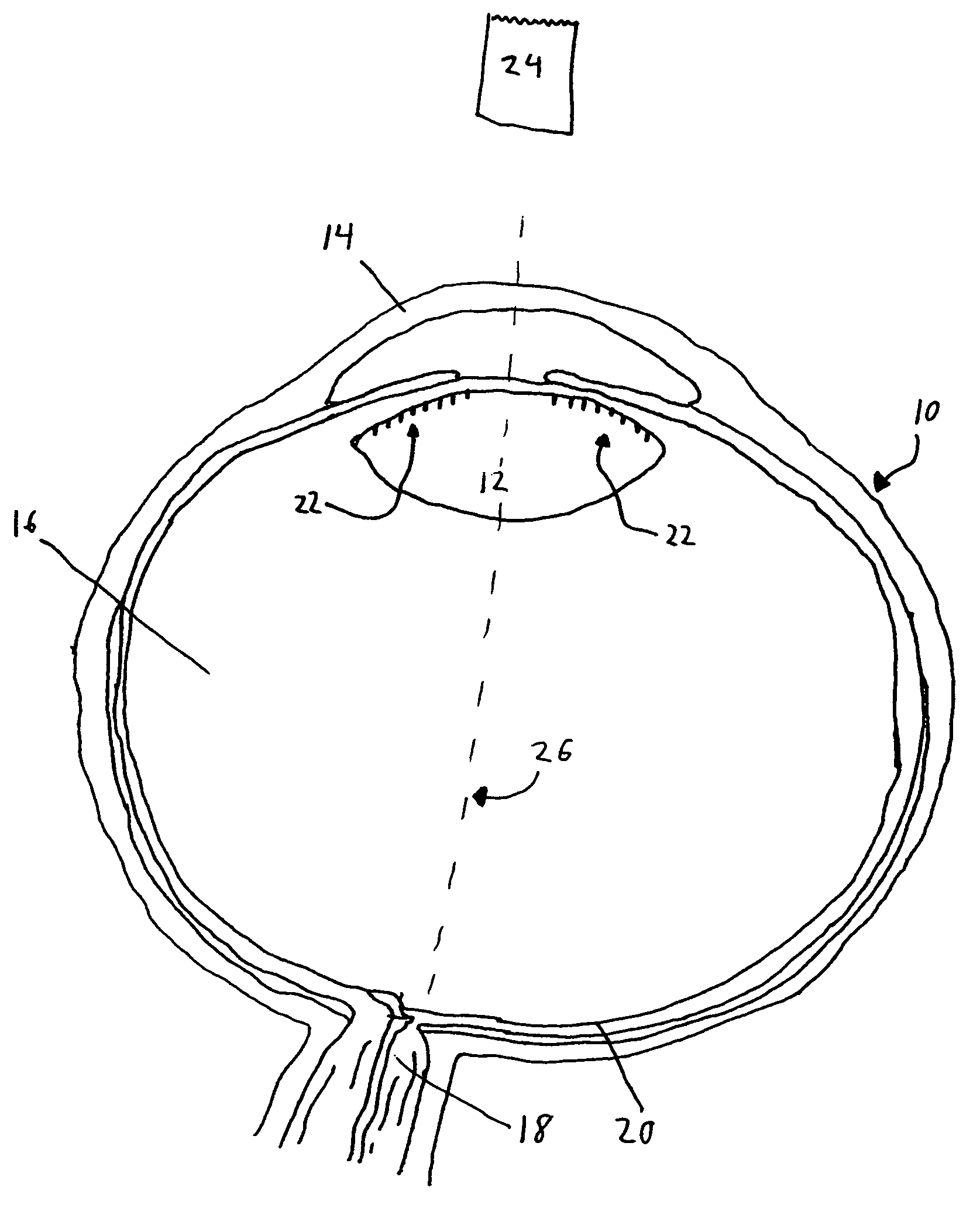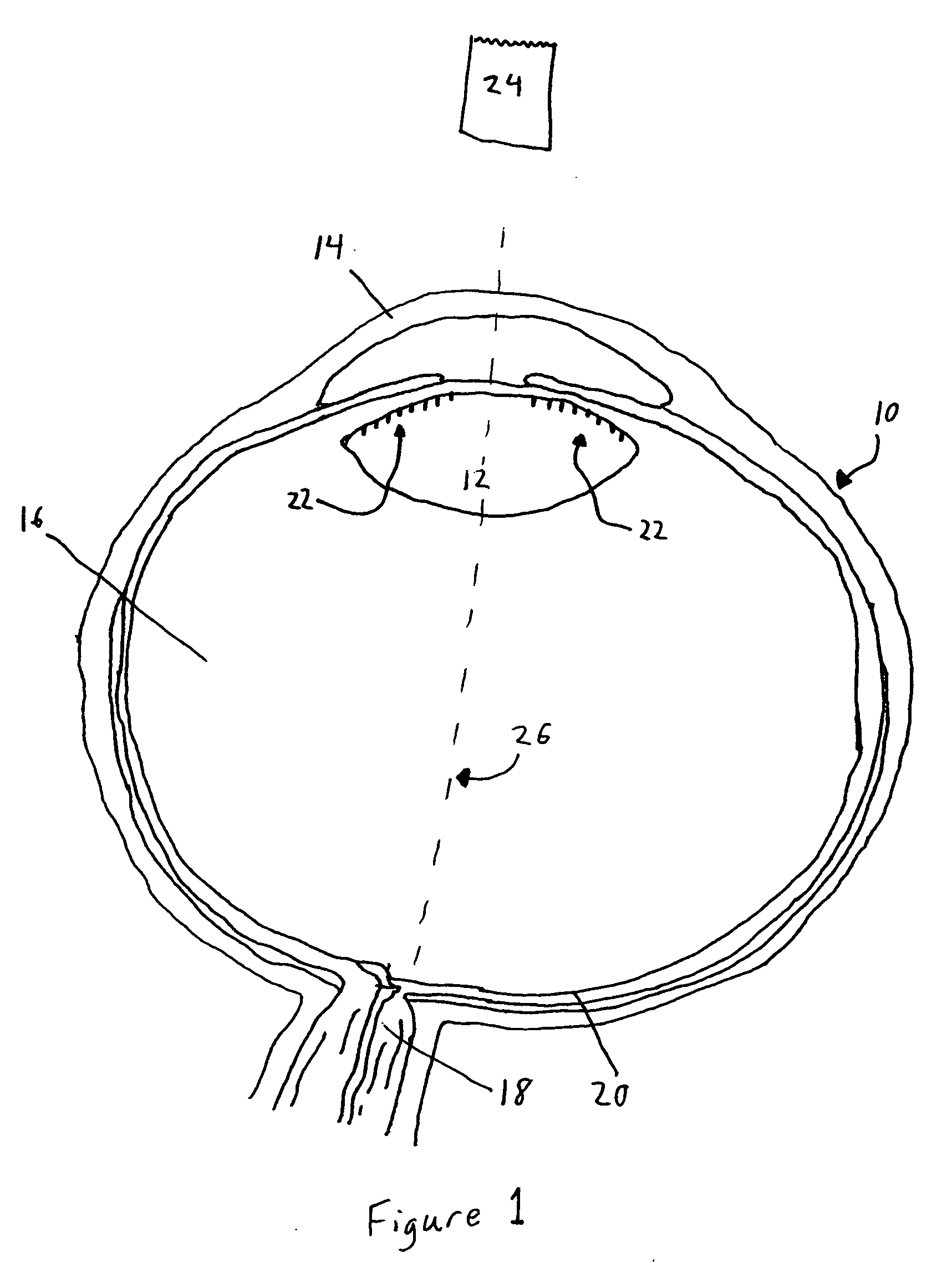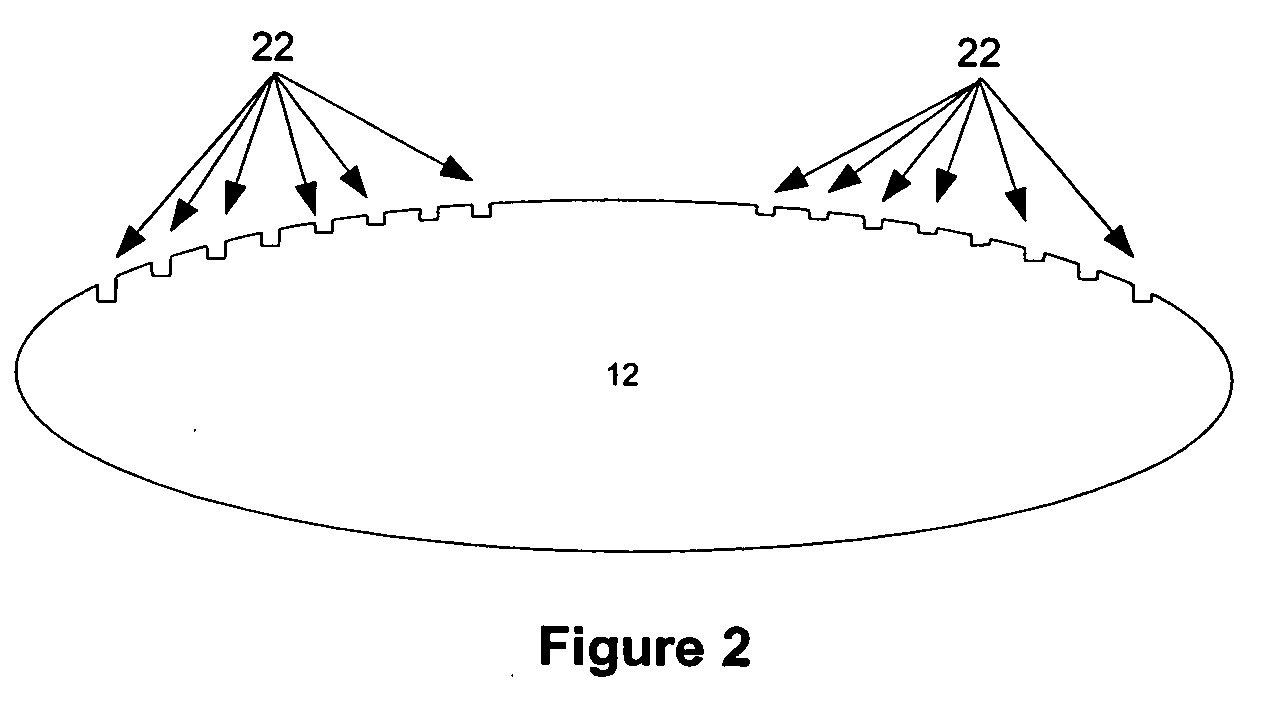Intraocular lens adapted for adjustment via laser after implantation
- Summary
- Abstract
- Description
- Claims
- Application Information
AI Technical Summary
Benefits of technology
Problems solved by technology
Method used
Image
Examples
Embodiment Construction
[0025] The optical system of FIG. 1 is an eye 10 in which the lens has been replaced by an IOL 12. The eye 10 generally consists of a cornea 14, the IOL 12, vitreous 16, the optic nerve 18 and a retina 20. IOL 12 is preferably foldable, but may be hard or any other suitable type. Further, the IOL 12 is preferably made from a polymer; however, the IOL 12 can be silicone, acrylic or any other suitable material.
[0026]FIG. 1 shows an optical system which was modified by ablating grooves 22 into a portion of the optical system using a short pulse laser 24. The grooves 22 produce a diffractive effect when light passes through the optical system, improving the optical system's performance. Preferably, the grooves 22 are ablated into an IOL12; however, the grooves can be ablated into a contact lens, eye glasses, the natural lens of the eye 10 or any other suitable portion of the optical system. The grooves 22 are preferably about 1 nanometer to about 50 microns deep and about 1 nanometer t...
PUM
 Login to View More
Login to View More Abstract
Description
Claims
Application Information
 Login to View More
Login to View More - R&D
- Intellectual Property
- Life Sciences
- Materials
- Tech Scout
- Unparalleled Data Quality
- Higher Quality Content
- 60% Fewer Hallucinations
Browse by: Latest US Patents, China's latest patents, Technical Efficacy Thesaurus, Application Domain, Technology Topic, Popular Technical Reports.
© 2025 PatSnap. All rights reserved.Legal|Privacy policy|Modern Slavery Act Transparency Statement|Sitemap|About US| Contact US: help@patsnap.com



